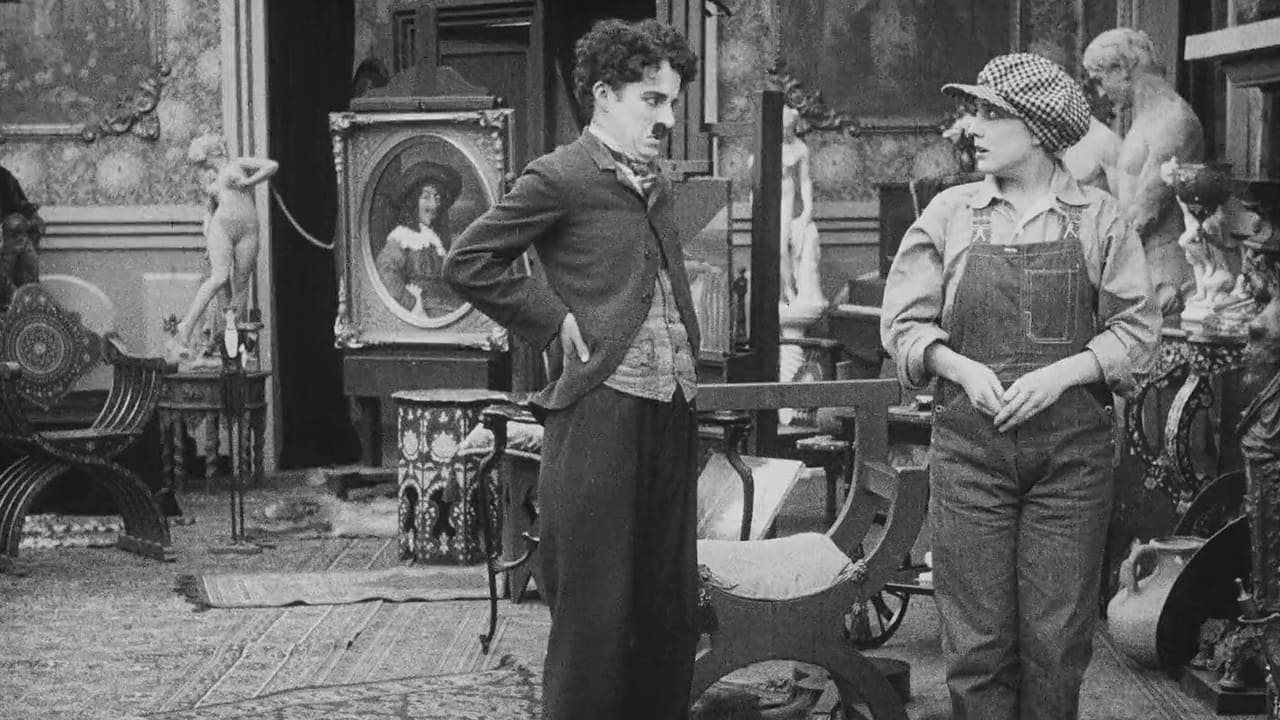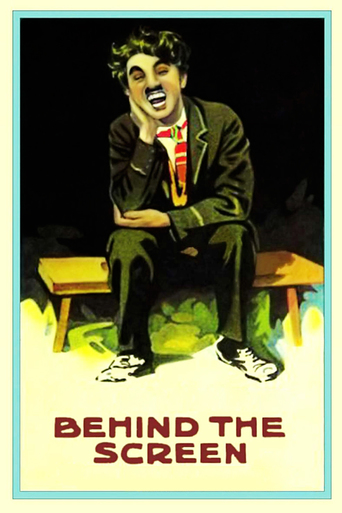

Very well executed
... View MoreIt's an amazing and heartbreaking story.
... View MoreThe plot isn't so bad, but the pace of storytelling is too slow which makes people bored. Certain moments are so obvious and unnecessary for the main plot. I would've fast-forwarded those moments if it was an online streaming. The ending looks like implying a sequel, not sure if this movie will get one
... View MoreIt really made me laugh, but for some moments I was tearing up because I could relate so much.
... View MoreGags made on the sake of film studios at such an early time is really something. There are a lot of memorable and I would say iconic moments, the chair moving scene, lunch scene, kissing scene etc are so great. But at the same time, this must be one of the most politically incorrect of the shorts I have seen of Chaplin being racist, homophobic and ironically showing hard work of a labourer getting no recognition and unions strike for nothing and being anarchists. Still considering the time it can be given a little slack.
... View MoreIn 1914 and early 1915, Chaplin did his first comedy shorts. In general, they were pretty awful--with almost no plot and consisting of him mugging it up on camera and hitting people. However, in 1915 he left Keystone Studio and began making better films with Essenay (though there are some exceptions) and finally, in 1916, to Mutual where he made his best comedy shorts. These newer films had more plot and laughs and usually didn't relay on punching or kicking when they ran out of story ideas.This film is one of these later Mutual Films and has a pretty decent amount of plot. Charlie is a carpenter's assistant on a movie set and his boss mostly sits around doing nothing--making Charlie do all the work. Later, the crew goes on strike and Charlie gets to act (although in real life, Chaplin's sympathies would have definitely been with the workers). In addition, a lady sneaks onto the set and disguises herself as a male laborer. Charlie realizes this and falls for her, though everyone else thinks she's a guy. I particularly liked the scene where Charlie is making out with the lady and really smooching it up good--and his boss looks on with horror! Overall, this is a pretty typical Mutual film--neither better or worse than the average one and worth a look if you get the opportunity.An interesting scene was the one where Charlie picks up the MANY chairs and then the prop piano. This exact same scene was replicated by Syd Chaplin (Charlie's half-brother) years later in THE BETTER 'OLE.
... View MoreIt's very interesting and illuminating to screen Chaplin's early short films, to see his evolution as a comedian and as a protagonist viewers could root for. As well, one can trace the recurrent themes and see him refining and expanding upon routines. The self-referential aspect of "Behind the Screen" is one such scenario he had tried before, and it's a significant advancement over those previous works, becoming the apex of Chaplin's backstage parodies on film-making.From the beginning, Chaplin was involved in self-referential comedies, of which Mack Sennett's Keystone was of the first to explore in film. Only his second film, "Kid Auto Races at Venice" featured Chaplin mugging for the camera much to the annoyance of the cameraman. While at Keystone, Chaplin was also involved in, at least, three similar shorts where he causes mayhem backstage or during a scene: "A Film Johnnie", "The Property Man" (which is set in vaudeville rather than movie-making) and "The Masquerader". In 1915, he directed a much better paced version of this scenario, "His New Job", while at Essanay. The column gag in "Behind the Screen" is elaborated from the brief one in "His New Job". Furthermore, the storyline of Edna Purviance's character trying to get work at the studio by masquerading as a male is taken from "The Masquerader", except then it was Chaplin pretending to be a woman--a reversal upon a reversal. It also fits into the structure of self-reference, as she's an actress playing a wannabe-actress who pretends (acts) in an attempt to become an actress.There are some well worked out gags here involving a trap door and pie throwing, ruining movie scenes and generally causing havoc throughout a film studio. Chaplin and Eric Campbell once again play out their antagonism of David to Goliath. Even the homosexual joke works, without being too offensive. There's also the anti-trade unions social commentary and the violent explosive finale gag, both of which didn't hamper the fun for me.Others have seen a parody of Keystone's film-making and knockabout slapstick in the film, and that certainly has credibility. As well, it's remarkable how far Chaplin had come after only leaving Keystone two years prior. "Behind the Screen" is a much-matured Chaplin short that finds its humor in poking fun at what it is and what goes into itself.
... View More(Spoiler warning)The unsung star of many of Chaplin's best silent films has to be Edna Purviance. She and Chaplin shared a chemistry that, to be honest, was superior to all other on-screen pairings Chaplin enjoyed either in his silent era, or later sound films. And that includes Paulette Goddard and Claire Bloom.Behind the Screen doesn't showcase Edna per se - she only appears in maybe 5 minutes of it - but she nearly steals the scene as a wannabe actress who disguises herself as a male stagehand in order to break into show business. Of course it doesn't take long for Charlie (here playing David to Eric Campbell's burly Goliath) to see through the disguise. Mere moments later, he and Edna are smooching up a storm, leading to one of the funniest moments in all of Chaplin's silents when Campbell's character catches the two, thinks they're gay, then starts "flying" around the room. Yes, it's politically incorrect and yes, no one could get away with such a joke today. But this was 1916 and no one cared. It was just a joke ... and a very funny one.Edna's best scene is when Charlie discovers her sitting alone, strumming a guitar and singing. It's a very brief moment, but you can tell from how it's filmed that Chaplin did indeed care about showcasing his favorite co-star.The rest of the film is a fast moving look behind the scenes at a movie studio, and features a rapid fire succession of gags, including the inevitable pie-throwing battle. An unexpectedly violent ending (played for laughs but nonetheless probably fatal for those involved) leaves a strange aftertaste, but otherwise this is an example of Chaplin hitting his stride during his very productive middle-period of silent films. Highly recommended both for fans and for those curious about the appeal of Edna Purviance.
... View More